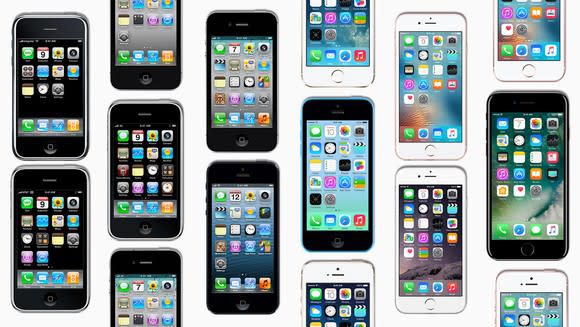Why Apple Inc.'s Next iPhone X Will Cost at Least $899
In the fall of 2017, Apple (NASDAQ: AAPL) introduced three new smartphones: iPhone 8, iPhone 8 Plus, and iPhone X. The starting prices for each of these devices were $699, $799, and $999, respectively. The iPhone 8 and iPhone 8 Plus were priced roughly in line with their predecessors, while the iPhone X started at a higher price point than even the highest-end configuration of any other iPhone.
This year, Apple is, yet again, expected to introduce three new iPhone models: A lower-cost model that succeeds both the iPhone 8 and iPhone 8 Plus, a direct successor to the current iPhone X, and a version of the successor to the iPhone X with a significantly larger display.

Image source: Apple.
At this point, not much has been rumored about the pricing of the successor to the current iPhone X. However, I believe it'll be no lower than $899, with a $999 price point being quite likely. Here's why.
The 6.1-inch LCD iPhone as a reference
KGI Securities analyst Ming-Chi Kuo, whose track record when it comes to predicting future iPhone specifications and related supply chain machinations is quite good, recently said that the cheapest of this year's new iPhone models -- a device that's expected to use a 6.1-inch liquid crystal display (LCD) and omit some of the fancier features that the iPhone X models will have -- could be priced at between $699 and $799.
It seems reasonable to expect that the price difference between the 6.1-inch LCD iPhone model and the successor to the current iPhone X will be at least $200. The reason for the large gap is that the next-generation iPhone X is expected to be much more expensive to manufacture due to several factors , including:
It's expected to use a more expensive stainless-steel metal frame, while the upcoming 6.1-inch LCD iPhone should use a cheaper aluminum frame.
Apple is expected to include its pressure-sensitive display technology, known as 3D Touch, in the next iPhone X, but that feature is expected to be omitted from the 6.1-inch LCD model.
The organic light-emitting diode (OLED) display on the next-generation iPhone X should be substantially more expensive to manufacture than the LCD that'll be used on the 6.1-inch LCD model.
The next-generation iPhone X is expected to incorporate 4 GB of memory, while the 6.1-inch LCD iPhone is believed to have just 3 GB of memory.
Apple is likely to give the 6.1-inch LCD iPhone a single-lens camera, while the upcoming iPhone X should have a pricier dual-lens camera.
Apple is also believed to be planning to use more advanced logic board and battery technologies in the upcoming iPhone X than it intends to use in the 6.1-inch LCD model.

Image source: Apple.
Each of these differences will likely add meaningfully to the next-generation iPhone X's cost structure relative to the LCD model's. Indeed, I wouldn't be surprised if the total bill of materials difference between the next-generation iPhone X and the 6.1-inch LCD iPhone is somewhere north of $100.
If Apple wants to maintain the same gross profit margin percentage on the next-generation iPhone X as it'll see on the 6.1-inch LCD iPhone, and assuming that the latter is aggressively priced at $699, then it would likely need to price that new iPhone X at a minimum of $866 (this assumes a $100 bill of materials difference and the same roughly 40% gross profit margin percentage for both devices).
Since the bill of materials delta could very well be north of $100 and Apple's gross profit margin percentage targets for the new iPhone X could be higher than they are for the 6.1-inch LCD iPhone, I think $899 is really the lowest that Apple will price the next iPhone X. I think it's more likely that the next one will continue to be sold for $999 and that its larger counterpart will come priced at $1,099 -- minimum.
More From The Motley Fool
Ashraf Eassa has no position in any of the stocks mentioned. The Motley Fool owns shares of and recommends Apple. The Motley Fool has the following options: long January 2020 $150 calls on Apple and short January 2020 $155 calls on Apple. The Motley Fool has a disclosure policy.
